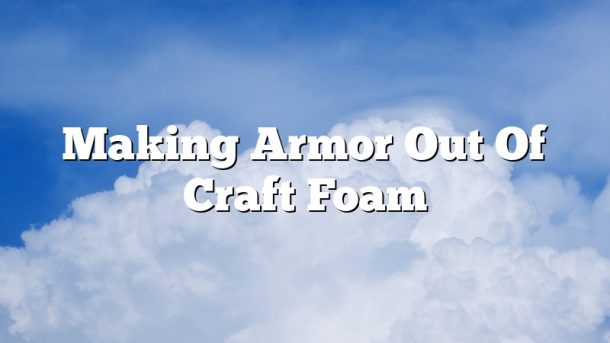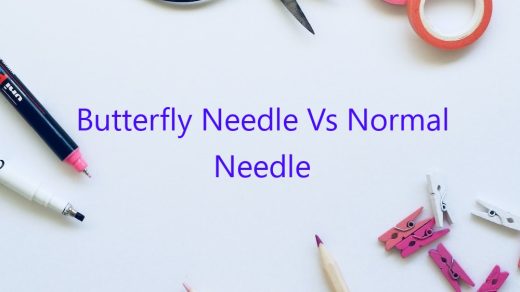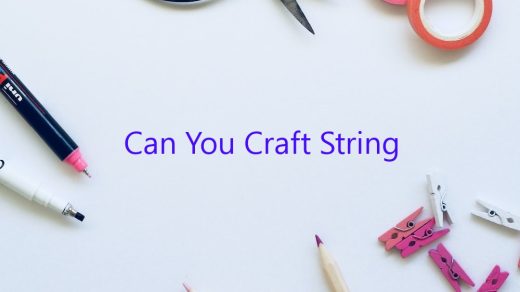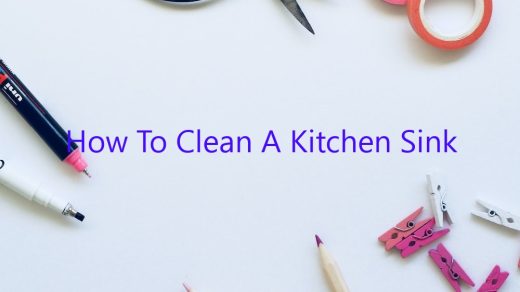Making armor out of craft foam is a fun and easy way to create custom armor for cosplay, LARPing, or just for fun. You can make any shape or design you like, and the armor is light and comfortable to wear.
The first step is to measure your body and calculate the size of the armor pieces you need. You can use a basic body measurement chart to get the measurements you need. Then, use a ruler or a grid on a piece of paper to draw the outline of the armor pieces.
Next, use a sharp knife to cut out the armor pieces. If you’re making a complex design, you may need to cut out the individual pieces first and then put them together like a puzzle. Make sure the edges are smooth and round off any sharp corners.
To make the armor more durable, you can seal it with a coat of modge podge or PVA glue. This will help to protect it from scratches and other damage.
You’re now ready to wear your new armor! Have fun and be safe.
Contents [hide]
Can you use craft foam for cosplay?
Craft foam is a popular material for cosplayers. It is lightweight, easy to work with, and can be inexpensive. However, not all craft foam is created equal. Some foam is thicker and more durable than others.
When looking for craft foam to use for cosplay, it is important to find a type that is thin, lightweight, and flexible. Thicker foam will be too heavy and stiff, while foam that is too thin may not be durable enough.
Craft foam can be easily cut and shaped with a pair of scissors. It can also be glued together with a hot glue gun. This makes it a versatile material for creating costumes and props.
In recent years, craft foam has become increasingly popular among cosplayers. It is a cheap, lightweight, and easy-to-use material that can be used to create a wide variety of costumes and props.
How do you make foam armor pieces?
Making foam armor pieces can be a fun and rewarding experience, but it takes a bit of practice to get the hang of it. In this article, we’ll discuss the basics of how to make foam armor pieces, from creating a pattern to attaching the armor to your body.
The first step in making foam armor is to create a pattern. This can be done by drawing out your design on paper, or by using a software program like Adobe Illustrator. If you’re using a paper pattern, it’s important to make sure that the pieces are the correct size and shape before cutting them out.
Once you have your pattern, the next step is to cut out the foam pieces. You can use a variety of foam materials for this, such as craft foam, insulation foam, or upholstery foam. When cutting the foam, be sure to use a sharp blade and a steady hand.
The next step is to attach the foam pieces to your body. This can be done with a variety of methods, such as hot glue, Velcro, or snaps. It’s important to make sure that the armor is secure and doesn’t move around while you’re wearing it.
Finally, you’ll need to finish the armor pieces by painting them or adding other decorations. This can be a fun way to express your creativity and personalize your armor.
So, that’s the basics of how to make foam armor pieces. It takes a bit of practice to get the hang of it, but it’s a fun and rewarding project. Have fun!
How do you stiffen craft foam?
Craft foam is a popular material for crafting and is often used to create 3D shapes. While craft foam is soft and pliable, it can be difficult to work with and can be easily damaged. One way to stiffen craft foam is to use a spray adhesive.
Spray adhesive is a liquid adhesive that is applied to a surface with a spray can. It is available from craft stores and hardware stores. When it dries, it forms a strong bond between the surfaces it is applied to.
To stiffen craft foam with spray adhesive, first cut the foam to the desired shape. Then, apply a thin layer of spray adhesive to the back of the foam. Be careful not to apply too much, or the adhesive will seep through the foam and be visible on the front. Let the adhesive dry completely before using the foam.
What type of foam is used for cosplay armor?
There are many types of foam that can be used for cosplay armor. It is important to choose the right foam for the project, as some types are better suited for certain projects than others.
One type of foam that is often used for armor is craft foam. Craft foam is a soft, lightweight foam that is easy to work with. It can be easily cut and shaped, and it is available in a variety of colors.
Another type of foam that can be used for cosplay armor is insulation foam. Insulation foam is a thick, dense foam that is ideal for projects that require a lot of protection. It is durable and can withstand a lot of wear and tear.
Another type of foam that can be used for armor is eva foam. Eva foam is a thick foam that is often used for making props. It is durable and can be painted or decorated to look like a variety of materials.
The type of foam that is best for a particular project will depend on the needs of the project. Some foams are better for creating a lightweight armor, while others are better for creating a more durable armor. It is important to choose the right foam for the project to ensure that the armor is the right weight and is strong enough to protect the wearer.
Can you use craft foam instead of EVA foam?
EVA foam and craft foam are both types of foam that can be used for crafting. They are both made of polyethylene, but EVA foam is denser and more durable than craft foam. Craft foam is also less expensive than EVA foam.
Both types of foam can be used for creating props and costumes. Craft foam is a good choice for smaller pieces, while EVA foam is better for larger pieces. EVA foam can also be used for making armor, while craft foam is not as durable.
Craft foam can be cut with a craft knife or scissors, while EVA foam can be cut with a hot knife. Craft foam can also be adhered to other surfaces with craft glue, while EVA foam can be adhered with spray adhesive or hot glue.
Overall, craft foam is a good option for smaller projects, while EVA foam is a better option for larger projects that need more durability.
How do you make EVA foam armor?
Making EVA foam armor can be a fun and rewarding project, and it’s not as difficult as you might think. In this article, we’ll show you how to make your own EVA foam armor using a few basic supplies.
First, you’ll need to gather some supplies. For this project, you’ll need EVA foam, a hot knife, a ruler, a pencil, a cutting mat, and a pair of scissors.
Next, you’ll need to measure and cut the EVA foam. To do this, you’ll need to measure the size of your armor and then cut the foam to size. Be sure to leave a margin of at least 1/2 inch on all sides.
Once the foam is cut to size, you can start shaping it. To do this, you’ll need to use the hot knife. Simply heat the knife up and then use it to cut and shape the foam. Be sure to wear safety goggles and a mask while doing this, as the fumes from the hot knife can be dangerous.
Once the foam is shaped, you can start adding details. To do this, you can use a ruler and a pencil to draw out the details of your armor. Then, use a pair of scissors to cut out the details.
Finally, you’ll need to attach the armor to your body. To do this, you can use straps, elastic, or velcro. Be sure to test the armor to make sure it is comfortable and fits properly.
That’s all there is to it! With a little bit of time and effort, you can create your very own EVA foam armor.
How do you heat craft foam?
There are a few ways that you can heat craft foam, and each has its own benefits and drawbacks.
One way to heat craft foam is to use a heat gun. A heat gun is a handheld tool that emits a stream of hot air. This is a quick and easy way to heat the foam, and it is also a great way to soften the foam for shaping. However, be careful not to hold the gun too close to the foam, or you may damage it.
Another way to heat craft foam is to use an oven. This is a slower method, but it can be used to heat large pieces of foam. Be sure to use a low temperature, or you may damage the foam.
Finally, you can use a microwave to heat craft foam. This is a quick and easy way to heat small pieces of foam. However, it is important to be careful not to overheat the foam, or it may melt.




